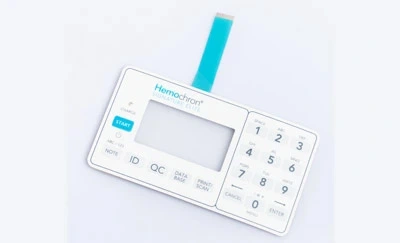
Ventilators play a pivotal role in the medical field. When it comes to designing membrane switches for such critical devices, it's not just about aesthetics or functionality alone. Instead, it demands a deep understanding, precision, and an eye for detail. So, what should one pay attention to? Let's dive in.
Ventilators are life-saving machines that assist patients in breathing when they cannot do it on their own.
Basic Functionality
Think of a ventilator as a wind instrument player, where instead of producing melodies, it helps lungs inhale and exhale. The primary objective? Keeping oxygen and carbon dioxide levels in check.
Importance in Medical Field
In situations like surgeries or severe respiratory issues, ventilators step in as the guardian angel, ensuring the patient receives a steady oxygen supply.

Now, when it comes to the membrane switches, these are essentially the control panels for devices, like our ventilators.
How They Work
Ever tapped on a microwave's touchpad? That's a membrane switch! It’s a pressure pad with printed circuits, activated with touch.
Types and Varieties
From non-tactile to tactile and capacitive, there's a variety to choose from, each offering a unique feel and functionality.
Designing membrane switches for ventilators isn't a walk in the park. It requires utmost care and expertise.
User Interface and Ergonomics
How easy is it for a nurse to adjust the settings? The design should be intuitive, user-friendly, and accessible, even in the most stressful situations.
Reliability and Durability
Given that a ventilator can be the thin line between life and death, membrane switches must be reliable. They need to withstand repeated use without faltering.
Environmental Factors
Consider where the ventilator will be used. Humid environment? Sterile room? The design must account for these factors to ensure longevity and optimal performance.
Compliance and Standards
Ensure that the membrane switches comply with medical standards. Safety first, always!
Designing is an art, but sometimes artists can err.
Overcomplication
Simplicity is the key. A ventilator's control shouldn't feel like piloting a spacecraft. Make it straightforward.
Ignoring Feedback
Always listen to the end-users – doctors, nurses, and technicians. Their feedback is invaluable.
Designing membrane switches for ventilator controls is no ordinary task. It's a blend of art, science, and a dash of empathy. Remember, at the heart of this machine, is a life relying on its flawless function.
1. Why are membrane switches used in ventilators?
They offer a seamless and clean interface, which is easy to clean and maintain in a medical environment.
2. Can any membrane switch be used for any ventilator?
No, it should be designed specifically considering the ventilator's requirements and the environment it'll be used in.
3. How often should these membrane switches be replaced?
It depends on usage and the specific make. Regular inspections will help determine their longevity.
4. Are there universal standards for designing these switches?
There are medical device standards that must be adhered to, but designs can vary based on the manufacturer and model.
5. What's the most crucial aspect of the membrane switch in a ventilator?
Reliability. In critical medical situations, the device must perform without fail. A membrane switch's ability to function consistently and accurately is paramount.